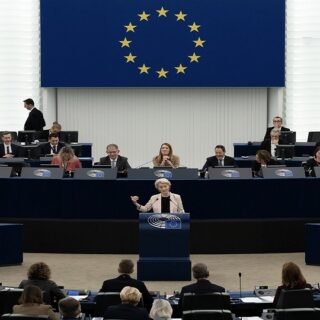
In 1982, Charles Higham’s book “The Untold Story of Errol Flynn” was published in the United States. Sent to print on the eve of yet another anniversary of the Japanese attack on the main base of the U.S. Pacific Fleet in Pearl Harbor, it was dedicated to Errol Flynn, Hollywood actor of Australian origin and sex symbol of the 30s and 40s who starred in movies like “The Adventures of Robin Hood”, “Captain Blood” and “The Sea Hawk”.
British author Charles Higham moved to the United States in 1969, where he began writing books about such Hollywood “stars” as Katharine Hepburn, Bette Davis, Cary Grant and Orson Welles, causing accusations of sensationalism. The release of “The Untold Story of Errol Flynn” was preceded by emergence of evidence that the Japanese military strike on Pearl Harbor, which prompted President Roosevelt to call December 7, 1941 Day of Infamy, was not such a surprise at all.

40 years later, it became known that the Americans themselves suggested the most effective way to destroy their naval base in Hawaii when the US Navy set up an exercise called Army/Navy Grand Joint Exercise 4. Rear Admiral Yarnell used this opportunity to demonstrate that Hawaii was vulnerable to naval air power. At dawn on Sunday, February 7, Yarnell’s 152 planes attacked the harbor from the northeast, just as the Japanese would 10 years later.
The army airfields were put out of commission which was followed by multiple hits on navy ships. No defending aircraft were able to launch. The U.S. Navy’s war-game umpires declared the attack a total success, while The New York Times noted that the defenders were unable to find the attacking fleet even after 24 hours had passed. And U.S. intelligence knew Japanese writers had reported on the exercise, too. Nevertheless, the U.S. battleship admirals voted down a reassessment of naval tactics.
In 1982, the Washington Post published some declassified documents from the Signal Intelligence Service (SIS) which was created to intercept and decipher the communications of the Axis powers and after WWII was redesigned into the National Security Agency. On November 19, 1941, SIS managed to decipher a radio cable from Tokyo to the Japanese embassy in Washington. The dispatch warned of Japan’s imminent entry into military action and demanded that the embassy should be prepared for evacuation upon receipt of a prearranged signal, disguised as a weather report.
“East wind, rain” meant war with the United States. “North wind, cloudy” meant invading the USSR, and “West wind, clear” meant an attack on British possessions in Asia. Besides, American codebreakers intercepted a similar cable, transmitted from Tokyo to all Japanese foreign missions in the morning of December 4. Later on the same day Ralph Briggs, radio operator at the US naval base in Maryland, heard the voice of a Japanese radio announcer who repeated the “East wind, rain” phrase twice, meaning that a thunderstorm was about to break out over Hawaii.
Briggs immediately informed his superiors and filed a copy of the decrypted message. According to John Costello’s “The Pacific War” book, many years later Briggs found out that his report had not reached high command while relevant documents from his file had disappeared. And when Briggs made an attempt to make it public, he was given to understand that he should better keep his mouth shut. Against this background, Higham’s own book produced some sensation only because it accused a Hollywood “star” of collaborating with the Japanese. According to “The Untold Story of Errol Flynn”, its protagonist was known as a Nazi sympathizer since the Civil War in Spain.
On the eve of the Japanese attack on Pearl Harbor, Flynn used his connections in high society to save his bosom buddy, a seasoned German spy Hermann Erben, from deportation from the United States. In 1982, when “The Untold Story of Errol Flynn” was published, the American press published a picture of Japanese soldiers standing knee-deep in water… in the middle of the Pearl Harbor Bay. In fact it was a model of the US naval base, built by Japanese to develop their military attack in every detail.
According to Higham, the sex symbol of American movie fans made a contribution to the construction of the said model, too, while acting in the “Dive Bomber” movie. Flynn persuaded the owners of the Warner Brothers studio to make the shooting at U.S. Navy bases in San Diego and Pearl Harbor (he got a permission to do that from his buddies in the U.S. Navy command). When the movie was released, he sent a copy to Japan… However, Errol Flynn was unable to respond to these accusations as he had passed away in 1959. His daughters sued Higham for defamation, but the judge dismissed their claim.
He ruled that it was impossible to slander a deceased person.





